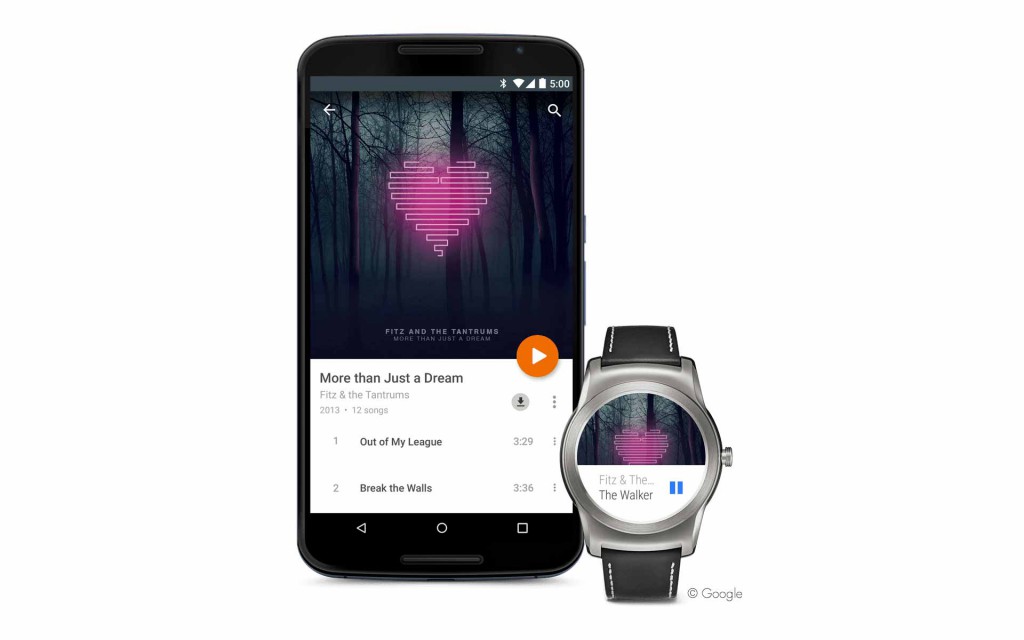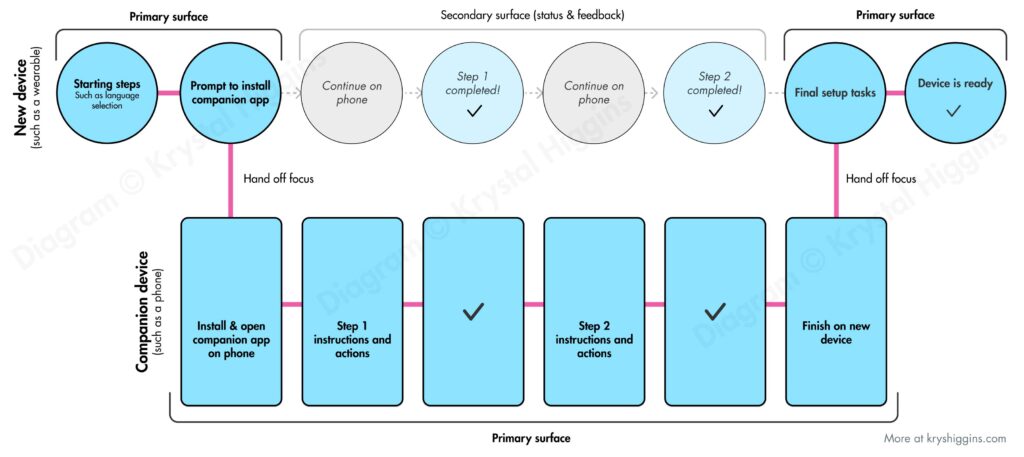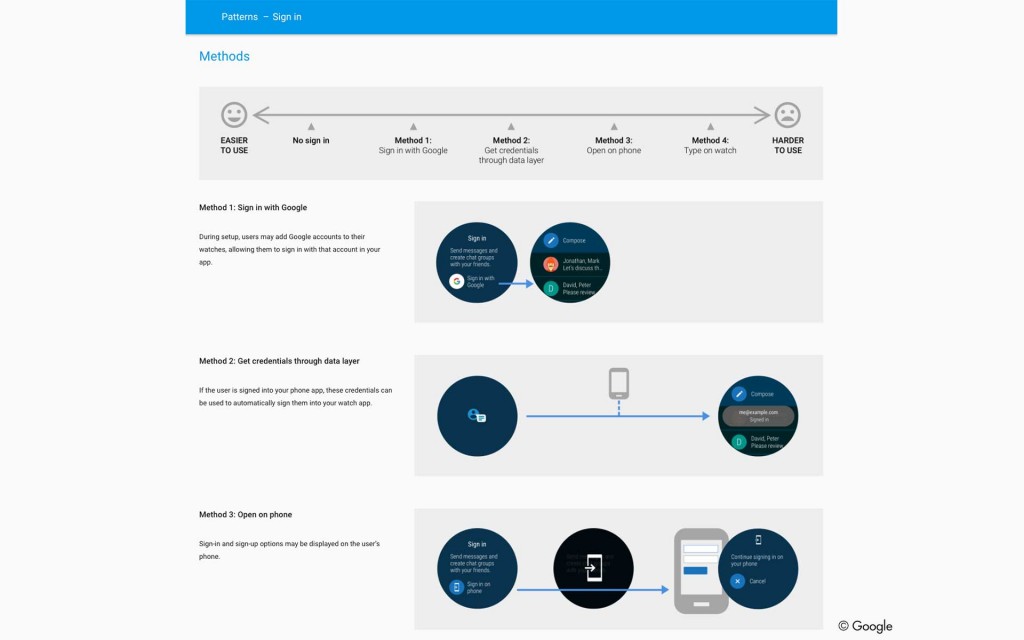Previously called Android Wear, Wear OS is a smart watch platform from Google that serves watches of multiple shapes, sizes, and use cases. Among its top features at the time I worked on the platform were actionable notifications, fitness tracking, and messaging. As a staff interaction designer on the Wear OS UX team, I worked on several projects, including designing the companion app, watch setup and onboarding, and enabling watches to go standalone.

Project: Companion app and watch setup and onboarding
I led UX for both the Android and iOS companion apps. I was responsible for enabling Wear OS support on iOS when previously the watch had only worked when paired to an Android device.
A main component of the companion app experience was how it was used to set up the watch. I designed and oversaw multiple iterations of the setup flow and companion app experience from releases 1.1 through 2.0, which included choreographing states between the watch and phone in a manner that I describe in my article “The choreography of companion setup.” I established principles and techniques for on-watch onboarding and user education for features such as wrist gestures enabling one-handed use, and a welcome tutorial for new users of the watch (opt-in).



Project: Enabling watches to go standalone
I established a vision for Wear OS watches to run without needing a phone nearby, and drove this vision to execution as a UX-led initiative by coming up with designs for enabling permissions at runtime and handling authentication on the watch. These authentication methods because a first-of-their-kind experience for the 2.0 version of Wear OS. This included designing an experience during watch setup that would allow users to pass wifi and authentication credentials to their watch, to reduce how often they needed to do such flows on the watch at runtime, as well as developing guidance for partners on when and how to request authentication on-watch. To this day, the principles I established for on-watch authentication are unchanged, even though the interface has been refreshed.

Each of these projects involved collaborating with visual and motion designers, engineers, product managers, developer relations teams, and the larger Android system team.
Summary of my activities
- Interaction design
- Mentorship
- Prototyping
- Project management
- Guideline publication
- Strategic design planning
